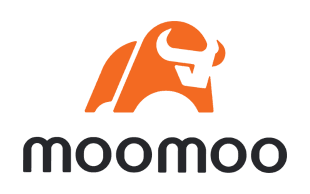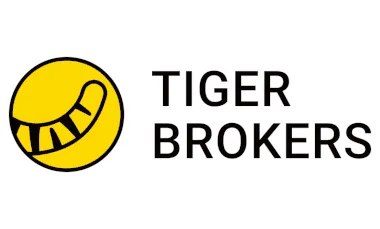Our top pick for
24/5 trading

Caterpillar Inc is a farm & heavy construction machinery business with stocks listed in the US. Caterpillar shares (CAT) are listed on the NYSE and all prices are listed in US Dollars. Its last market close was US$363.89 – a decrease of 4.44% over the previous week. Here's how to invest if you're based in Australia.
Our top pick for
24/5 trading

Our top pick for
Copy trading

Our top pick for
Mobile app

Caterpillar's shares were split on a 2:1 basis on 13 July 2005. So if you had owned 1 share the day before the split, the next day you would own 2 shares. This wouldn't directly have changed the overall worth of your Caterpillar shares – just the quantity. However, indirectly, the new 50% lower share price could have impacted the market appetite for Caterpillar shares which in turn could have impacted Caterpillar's share price.
| 52-week range | US$272.5684 - US$418.5 |
|---|---|
| 50-day moving average | US$391.3298 |
| 200-day moving average | US$358.8275 |
| Target price | US$391.04 |
| PE ratio | 16.8937 |
| Dividend yield | US$5.42 (1.55%) |
| Earnings per share (TTM) | US$21.54 |
Use the fields above to explore the returns from a historical investment. Please refer to the charts further up this page to see performance over 5 years, or other periods. Past performance doesn't indicate future results. Capital is at risk.
Historical closes compared with the last close of $363.89
| 1 week (2024-12-12) | -4.44% |
|---|---|
| 1 month (2024-11-19) | -4.82% |
| 3 months (2024-09-19) | -2.52% |
| 6 months (2024-06-18) | 11.92% |
| 1 year (2023-12-19) | 24.21% |
|---|---|
| 2 years (2022-12-19) | 56.65% |
| 3 years (2021-12-17) | 80.71% |
| 5 years (2019-12-19) | 150.92% |
We currently don't have a partnership for that product, but we have other similar offers to choose from (how we picked these ):
The technical analysis gauge below displays real-time ratings for the timeframes you select. However, this is not a recommendation. It represents a technical analysis based on the most popular technical indicators: Moving Averages, Oscillators and Pivots. Finder might not concur and takes no responsibility.
Valuing Caterpillar stock is incredibly difficult, and any metric has to be viewed as part of a bigger picture of Caterpillar's overall performance. However, analysts commonly use some key metrics to help gauge the value of a stock.
Caterpillar's current share price divided by its per-share earnings (EPS) over a 12-month period gives a "trailing price/earnings ratio" of roughly 17x. In other words, Caterpillar shares trade at around 17x recent earnings.
That's relatively low compared to, say, the trailing 12-month P/E ratio for the NASDAQ 100 at the end of 2019 (27.29). The low P/E ratio could mean that investors are pessimistic about the outlook for the shares or simply that they're under-valued.
Caterpillar's "price/earnings-to-growth ratio" can be calculated by dividing its P/E ratio by its growth – to give 1.6868. A low ratio can be interpreted as meaning the shares offer better value, while a higher ratio can be interpreted as meaning the shares offer worse value.
The PEG ratio provides a broader view than just the P/E ratio, as it gives more insight into Caterpillar's future profitability. By accounting for growth, it could also help you if you're comparing the share prices of multiple high-growth companies.
Caterpillar's EBITDA (earnings before interest, taxes, depreciation and amortisation) is US$15.8 billion (£12.5 billion).
The EBITDA is a measure of a Caterpillar's overall financial performance and is widely used to measure stock profitability.
Over the last 12 months, Caterpillar's shares have ranged in value from as little as US$272.5684 up to US$418.5. A popular way to gauge a stock's volatility is its "beta".
Beta measures a share's volatility in relation to the market. The market (NYSE average) beta is 1, while Caterpillar's is 1.095. This would suggest that Caterpillar's shares are a little bit more volatile than the average for this exchange and represent, relatively speaking, a slightly higher risk (but potentially also market-beating returns).
| Revenue TTM | US$65.7 billion |
|---|---|
| Operating margin TTM | 19.5% |
| Gross profit TTM | US$15.6 billion |
| Return on assets TTM | 9.93% |
| Return on equity TTM | 53.48% |
| Profit margin | 16.26% |
| Book value | 40.176 |
| Market capitalisation | US$175.7 billion |
| EBITDA | US$15.8 billion |
TTM: trailing 12 months
Dividend payout ratio: 24.65% of net profits
Recently Caterpillar has paid out, on average, around 24.65% of net profits as dividends. That has enabled analysts to estimate a "forward annual dividend yield" of 1.55% of the current stock value. This means that over a year, based on recent payouts (which are sadly no guarantee of future payouts), Caterpillar shareholders could enjoy a 1.55% return on their shares, in the form of dividend payments. In Caterpillar's case, that would currently equate to about $5.42 per share.
While Caterpillar's payout ratio might seem low, this can signify that Caterpillar is investing more in its future growth.
Caterpillar's most recent dividend payout was on 19 February 2025. The latest dividend was paid out to all shareholders who bought their shares by 20 January 2025 (the "ex-dividend date").
Environmental, social and governance (known as ESG) criteria are a set of three factors used to measure the sustainability and social impact of companies like Caterpillar.
When it comes to ESG scores, lower is better, and lower scores are generally associated with lower risk for would-be investors.
Total ESG risk: 40.85
Socially conscious investors use ESG scores to screen how an investment aligns with their worldview, and Caterpillar's overall score of 40.85 (as at 12/31/2018) is pretty weak – landing it in it in the 86th percentile of companies rated in the same sector.
ESG scores are increasingly used to estimate the level of risk a company like Caterpillar is exposed to within the areas of "environmental" (carbon footprint, resource use etc.), "social" (health and safety, human rights etc.), and "governance" (anti-corruption, tax transparency etc.).
Environmental score: 13.72/100
Caterpillar's environmental score of 13.72 puts it squarely in the 4th percentile of companies rated in the same sector. This could suggest that Caterpillar is a leader in its sector terms of its environmental impact, and exposed to a lower level of risk.
Social score: 21.74/100
Caterpillar's social score of 21.74 puts it squarely in the 4th percentile of companies rated in the same sector. This could suggest that Caterpillar is a leader in its sector when it comes to taking good care of its workforce and the communities it impacts.
Governance score: 8.39/100
Caterpillar's governance score puts it squarely in the 4th percentile of companies rated in the same sector. That could suggest that Caterpillar is a leader in its sector when it comes to responsible management and strategy, and exposed to a lower level of risk.
Controversy score: 4/5
ESG scores also evaluate any incidences of controversy that a company has been involved in. Caterpillar scored a 4 out of 5 for controversy – the second-lowest score possible, reflecting that Caterpillar has a damaged public profile.
Caterpillar Inc was last rated for ESG on: 2019-01-01.
| Total ESG score | 40.85 |
|---|---|
| Total ESG percentile | 86.14 |
| Environmental score | 13.72 |
| Environmental score percentile | 4 |
| Social score | 21.74 |
| Social score percentile | 4 |
| Governance score | 8.39 |
| Governance score percentile | 4 |
| Level of controversy | 4 |
Caterpillar Inc. manufactures and sells construction and mining equipment, off-highway diesel and natural gas engines, industrial gas turbines, and diesel-electric locomotives in worldwide. Its Construction Industries segment offers asphalt pavers, compactors, road reclaimers, forestry machines, cold planers, material handlers, track-type tractors, excavators, telehandlers, motor graders, and pipelayers; compact track, wheel, track-type, backhoe, and skid steer loaders; and related parts and tools. The company's Resource Industries segment provides electric rope and hydraulic shovels, draglines, rotary drills, hard rock vehicles, tractors, mining trucks, wheel loaders, off-highway and articulated trucks, wheel tractor scrapers and dozers, fleet management products, landfill and soil compactors, machinery components, autonomous ready vehicles and solutions, work tools, and safety services and mining performance solutions, as well as related parts and services. Its Energy & Transportation segment offers reciprocating engine powered generator sets; reciprocating engines, drivetrain, and integrated systems and solutions; turbines, centrifugal gas compressors, and related services; and diesel-electric locomotives and components, and other rail-related products. The company's Financial Products segment provides operating and finance leases, installment sale contracts, revolving charge accounts, repair/rebuild financing services, working capital loans, and wholesale financing; and insurance and risk management products and services. Its All Other Operating segment offers filters and fluids, undercarriage, ground engaging tools, fluid transfer products, precision seals, and rubber sealing and connecting components; parts distribution; logistics solutions and distribution services; brand management and marketing strategy services; and digital investments services. Caterpillar Inc. was founded in 1925 and is headquartered in Irving, Texas.
Webull is a broker with zero-commission trading and a suite of tools to help you invest.
The best day trading platforms in Australia offer low fees and are packed full of features essential for algorithmic trading.
We used Finder's proprietary algorithm to find Australian-listed companies that have strong fundamentals and have a share price under $5.
Big gainers included NoviqTech, Octava Minerals and Singular Health Group.
Top gainers included SSR Mining Inc, Appen and Insignia Financial.
If you're thinking of trading stocks with Tiger Brokers, check out our review of this online broker's fees, safety and pros and cons first.
Find cheap stock brokerage in Australia when buying and selling shares on the ASX and other international exchanges.
A beginner's guide to options trading in Australia. Read the step-by-step process and compare brokers to start trading.
Compare share trading apps to find out which app has all the tools and resources you need to reach your investment goals.
Follow these tips to find the best share trading platform for you.